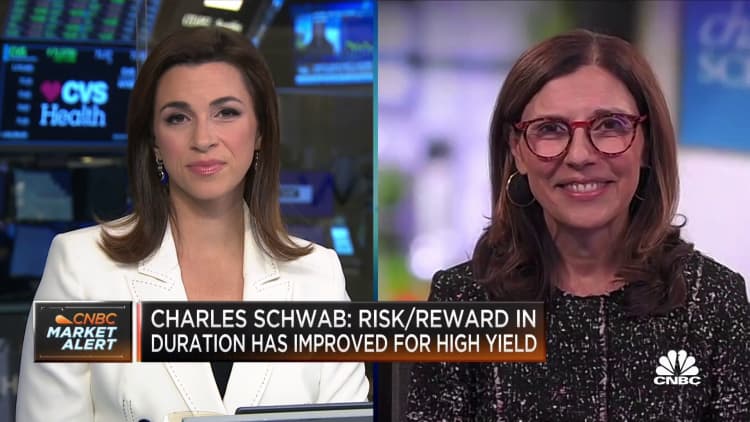Cravetiger | Moment | Getty Images
The 60/40 portfolio — a cornerstone strategy for the average investor — has been stressed by the pandemic-era economy and market dynamics.
However, “the 60/40 portfolio certainly isn’t dead,” Holly Newman Kroft, managing director and senior wealth advisor at asset manager Neuberger Berman, said Thursday at the semiannual CNBC Financial Advisor Summit.
While not dead, “it needs to be modernized,” she added.
What is a 60/40 portfolio?
The strategy allocates 60% to stocks and 40% to bonds — a traditional portfolio that carries a moderate level of risk.
More generally, “60/40” is a sort of shorthand for the broader theme of investment diversification.
The thinking is that when stocks — the growth engine of a portfolio — do poorly, bonds serve as a ballast since they often don’t move in tandem.
The classic 60/40 mix is generally thought to include U.S. stocks and investment-grade bonds, like U.S. Treasury bonds and high-quality corporate debt.
Why the 60/40 portfolio is stressed
Through 2021, the 60/40 portfolio had performed well for investors.
Investors got higher returns than those with more complex strategies during every trailing three-year period from mid-2009 to December 2021, according to an analysis authored last year by Amy Arnott, portfolio strategist for Morningstar.
However, things have changed.
Inflation spiked in 2022, peaking at a rate unseen in four decades. The U.S. Federal Reserve raised interest rates aggressively in response, which clobbered stocks and bonds.
Bonds have historically served as a shock absorber in a 60/40 portfolio when stocks tank. But that defense mechanism broke down.
How to rethink the 60/40
That dynamic — stocks and bonds moving more in tandem — is likely to persist for a while, Paula Campbell Roberts, chief investment strategist for global wealth solutions at KKR, said at the summit.
Indeed, while the Fed is unlikely to raise interest rates much higher (if at all), officials have also signaled they’re unlikely to cut rates anytime soon.
And there are some risks for U.S. stocks going forward, experts said. For one, while the S&P 500 is up 14% this year, those earnings are concentrated in just 10 of the biggest stocks, Roberts said.
That said, investors also benefit from higher interest rates since they can “access safer asset classes at a higher yield,” Kroft said. For example, banks are paying 5% to 5.5% on high yield cash accounts, and municipal bonds pay a tax-equivalent yield of about 7%, she said.
The Fed’s “higher for longer” mentality means bonds should have these equity-like returns for a longer period, Kroft said.
So, what does this mean for the 60/40 portfolio? For one, it doesn’t mean investors should dump their stocks, Kroft said.
“You never want to exit the asset class,” she said.
However, investors may consider substituting part — perhaps 10 percentage points — of their 60% stock allocation for so-called alternative investments, Kroft said.
That would likely increase investment returns and, given the typical properties of “alts,” reduce the risk of those assets moving in tandem with stocks, Kroft said.
Within the alts category, high net-worth investors can access certain things like private equity and private credit, Kroft said. The typical investor can gain alts access through more liquid funds — like a mutual fund or an exchange-traded fund — that focuses on alts, or via funds geared toward commodities, she added.
She cautioned that affluent investors pursuing private equity need to be “very careful” in their selection of asset managers because the difference in performance between top-performing and mid-tier firms is “huge,” Kroft said.
Within bonds, investors holding bonds with a short duration may want to consider extending that duration to lock in higher yields for longer, she added.
Credit: Source link




